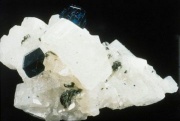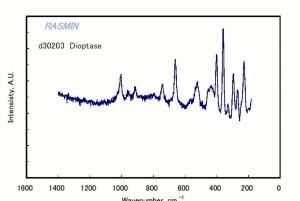Difference between revisions of "Dioptase"
Jump to navigation
Jump to search
m (Text replace - "== Authority ==" to "== Sources Checked for Data in Record ==") |
|||
| Line 40: | Line 40: | ||
| − | == | + | == Sources Checked for Data in Record == |
* Jack Odgen, ''Jewellery of the Ancient World'', Rizzoli International Publications Inc., New York City, 1982 | * Jack Odgen, ''Jewellery of the Ancient World'', Rizzoli International Publications Inc., New York City, 1982 | ||
Revision as of 19:47, 30 April 2016
Description
An emerald green copper silicate mineral that has been used as a Gemstone since Greco-Roman times. The prismatic dioptase crystals are found in large clumps which tend to fracture unevenly. Dioptase is found usually near copper deposits and occurs in Russia, Congo, Central African Republic, South West Africa, Zaire, Chile, and the United States (Arizona).
Synonyms and Related Terms
dioptasa (Esp.); dioptase (Fr., Port.); Dioptas (Deut.); dioptaas (Ned.)
Other Properties
Hexagonal crystal system with prismatic crystals. Cleavage is perfect in three directions. Fracture = conchoidal and brittle Luster = vitreous. Streak = pale greenish-blue.
| Composition | CuSiO2(OH)2 |
|---|---|
| Mohs Hardness | 5.0 |
| Density | 3.28-3.35 |
| Refractive Index | 1.65-1.71 |
Additional Information
Mineralogy Database: Dioptase
Additional Images
Sources Checked for Data in Record
- Jack Odgen, Jewellery of the Ancient World, Rizzoli International Publications Inc., New York City, 1982
- Van Nostrand's Scientific Encyclopedia, Douglas M. Considine (ed.), Van Nostrand Reinhold, New York, 1976
- C.W.Chesterman, K.E.Lowe, Audubon Society Field Guide to North American Rocks and Minerals, Alfred A. Knopf, New York, 1979
- Wikipedia, the free encyclopedia, at http://www.wikipedia.com Comment: http://en.wikipedia.org/wiki/Dioptase (Accessed Sept. 7, 2005)


